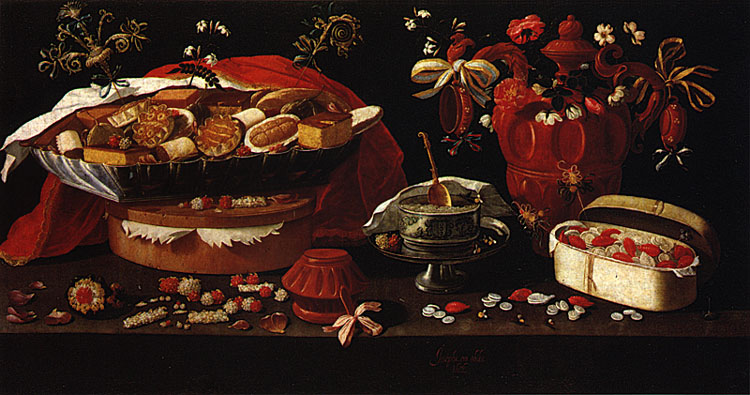Feel free to add any term you like to be authomaticaly linked throughout all the website.
Currently sorted By last update ascending Sort chronologically: By last update
 | By creation date
| By creation dateKingdom of the Two Sicilies:The Kingdom of the Two Sicilies (Italian: Regno delle Due Sicilie; Sicilian: Regnu d? Dui Sicili; Neapolitan: Regno d' 'e dduje Sicilie) was the largest of the Italian states before Italian unification. It was formed of a union of the Kingdom of Sicily and the Kingdom of Naples in 1816 and lasted until 1860, when it was annexed by the Kingdom of Sardinia, which became the Kingdom of Italy in 1861. The Two Sicilies had its capital in Naples and was commonly referred to in English as the "Kingdom of Naples".  The kingdom extended over the Mezzogiorno (the southern part of mainland Italy) and the island of Sicily. Lancaster notes that the integration of the Kingdom of the Two Sicilies in the Kingdom of Italy changed the status of Naples forever: "Abject poverty meant that, throughout Naples and Southern Italy, thousands decided to leave in search of a better future." Many went to the United States. It was heavily agricultural, like the other Italian states; the church owned 50?65% of the land by 1750. (source: Wikipedia) | |
|
1936:This was the year that Spanish Civil War started, on 17th July. |
Francis II:Francis II (Italian: Francesco II, christened Francesco d'Assisi Maria Leopoldo, 16 January 1836 ? 27 December 1894), was King of the Two Sicilies from 1859 to 1861. He was the last King of the Two Sicilies, as successive invasions by Giuseppe Garibaldi and Victor Emmanuel II of Sardinia ultimately brought an end to his rule, and marked the first major event of Italian unification. After he was deposed, the Kingdom of the Two Sicilies and the Kingdom of Sardinia were merged into the newly formed Kingdom of Italy. | |
|
Francisco de Quevedo y Villegas:Francisco G?mez de Quevedo y Santib??ez Villegas (Spanish: [f?an?θisko ?e ke?βe?o]; 14 September 1580 ? 8 September 1645) was a Spanish nobleman, politician and writer of the Baroque era.  Along with his lifelong rival, Luis de G?ngora, Quevedo was one of the most prominent Spanish poets of the age. His style is characterized by what was called conceptismo. This style existed in stark contrast to G?ngora's culteranismo. (source: Wikipedia) | |
|
Luis de G?ngora y Argote:Luis de G?ngora y Argote (11 July 1561 ? 24 May 1627) was a Spanish Baroque lyric poet. G?ngora and his lifelong rival, Francisco de Quevedo, are widely considered the most prominent Spanish poets of all time. | |
|
Baroque:The Baroque is a period of artistic style that used exaggerated motion and clear, easily interpreted detail to produce drama, tension, exuberance, and grandeur in sculpture, painting, architecture, literature, dance and music. The style began around 1600 in Rome, Italy and spread to most of Europe.  Still-life, by Portuguese painter Josefa de ?bidos, c.1679, Santar?m, Portugal, Municipal Library (source: Wikipedia) | |
|
Generation of '27:The Generation of '27 (Spanish: Generaci?n del 27) was an influential group of poets that arose in Spanish literary circles between 1923 and 1927, essentially out of a shared desire to experience and work with avant-garde forms of art and poetry. Their first formal meeting took place in Seville in 1927 to mark the 300th anniversary of the death of the baroque poet Luis de G?ngora.  Monument to Gerardo Diego, Madrid. Writers and intellectuals celebrated an homage in the Ateneo de Sevilla, which retrospectively became the foundational act of the movement. One of the members of this group was Federico Garc?a Lorca. (source: Wikipedia) | |
|
Adela:Adela is the youngest daughter of the Bernarda Alba family in the play The House of Bernarda Alba, of the spanish writer Federico Garc?a Lorca, and the only one to defy Bernarda. She is in love with Pepe el Romano and carries on a secret rendezvous with him until her sister Martirio intervenes and they have a scuffle, drawing the attention of the sleeping household. Adela's guilt is revealed by the discovery of straw on her skirt. She then freely admits that she has been with Pepe el Romano. She hangs herself at the play's climax. (source: Wikipedia) |
Federico Garc?a Lorca:Federico del Sagrado Coraz?n de Jes?s Garc?a Lorca (Spanish pronunciation: [fe?e??iko ?ar?θi.a ?lorka]; 5 June 1898 ? 19 August 1936) was a Spanish poet, dramatist and theatre director. Garc?a Lorca achieved international recognition as an emblematic member of the Generation of '27.  He was murdered by fascists forces during the Spanish Civil War. In 2008, a Spanish judge opened an investigation into Lorca's death. The Garc?a Lorca family eventually dropped objections to the excavation of a potential gravesite near Alfacar. However, no human remains were found. (source: Wikipedia) | |
|
Ferdinand II:Ferdinand II (Ferdinando Carlo, 12 January 1810 ? 22 May 1859) was King of the Two Sicilies from 1830 until his early death in 1859.  (source: Wikipedia) | |
|

